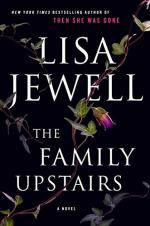
|
| Name: _________________________ | Period: ___________________ |
This test consists of 5 short answer questions, 10 short essay questions, and 1 (of 3) essay topics.
Short Answer Questions
1. In Chapter 57, where does Lucy tell Henry she has been?
2. What did Henry say he did with Birdie's cat after it died?
3. In Chapter 60, how long had Clemency been living in London?
4. In Chapter 53, how long does Henry remember someone coming to the door after his mother lost her baby and knocking for nearly a week?
5. When Libby calls and leaves a message for Dido, what is the name of the clients Libby asks Dido to have Claire speak to in Chapter 41?
Short Essay Questions
1. How did Clemency find her mother?
2. How thin was everyone in Chapter 43?
3. What does Libby say when Dido tells her that she and Miller have a connection?
4. In Chapter 34, when did Henry Sr. have a stroke, and how did it affect him?
5. What are the inhabitants of 16 Cheyne Walk ordered to surrender in May 1992?
6. What does Lucy think when she sees 16 Cheyne Walk in Chapter 38?
7. What does Libby learn about Miller on the trip from London?
8. Why did Lucy leave Serenity?
9. How does Henry get into David and Birdie's room, and what does he find?
10. What does Henry do about the baby his mother is carrying in Chapter 47?
Essay Topics
Write an essay for ONE of the following topics:
Essay Topic 1
Henry becomes infatuated with Phin. How is Henry influenced by Phin? How does Henry’s desire for Phin’s attention cause him to make some poor decisions?
Essay Topic 2
Miller is an investigative reporter. What skills does Miller have because of his job? How does he use those skills to help Libby solve the mystery of her birth family?
Essay Topic 3
David takes away the street clothes and shoes of everyone in the house. Why does he take away everyone’s clothes and shoes? What does this action symbolize?
|
This section contains 966 words (approx. 4 pages at 300 words per page) |

|




